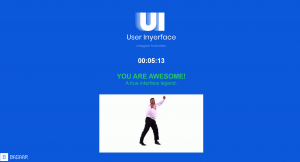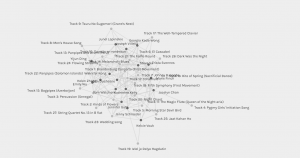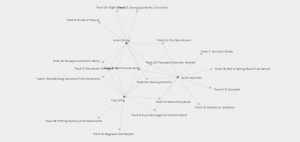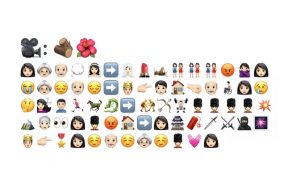Hi Joseph,
I enjoyed reading your post and I found it intriguing that you selected tracks based on the mood and the emotion that the music evokes. I was not considering this aspect at all so it was refreshing to see someone using a completely different criteria. When curating the list, I considered the factor of having/not having vocals and how they can represent different culture around the earth. I think that the difference in criteria comes down to how we understand the purpose of the golden record, as you made it very clear that you think this is a gesture of sending peace and joy.
Hi Sam,
I too did the detain/release simulation and shared some similar experience with you. It almost felt like the use of A.I. system was forcing me to rely on the rick levels without any additional information. The question I had was: Is this fair? Am I making the best decision based on so little information? How will my decision impact the person’s life? Considering the questions asked in the pretrial risk assessment, it is hard to say that the practice is ethical or justified.
Since the change brought by A.I. and algorithms in our life is inevitable, I agree with you that whether the data is telling the whole story is a critical question. Moreover, how human beings intend to use these data, which may just show one aspect of the picture, concerns me the most. Given the fact that algorithms are highly subjective depending on the designers, it makes me wonder how we can ensure the designers have the best interests at heart.
Hi Jennifer,
I really enjoyed reading your narratives and how you portraited the life story of Dana and Mary in great details. It clearly shows how our future can be shaped by using algorithms to determine people’s major life events, such as career path and right to birth. This is also touched on in my speculative narratives and it seems like we both share a similar perspective on the detrimental impact that algorithms can have on human beings.
What I found really interesting is that people who do not meet the criteria are “assigned with special project abroad” and cut off from their families. I wonder what happens to them? Does it mean they are given up on? In my story, people are “fixed” through bioengineering and given a second chance, which may not be the best practice. I do believe that even the support for student with learning disabilities and special needs is lacking now, it will be resolved in the future with more advanced technology.
I also like the statement you made about the definition of utopia/dystopia is in the eye of the beholder. Therefore, I don’t think that a utopia for all is possible given everyone has their subjective definition. What we might achieve is an environment supplemented by technology that can tolerate and facilitate different possibilities.



